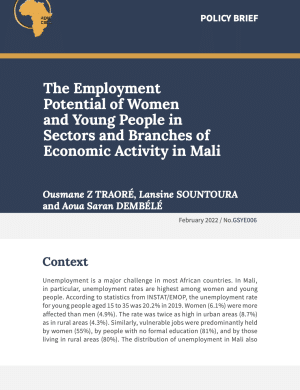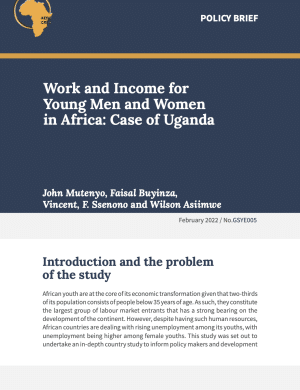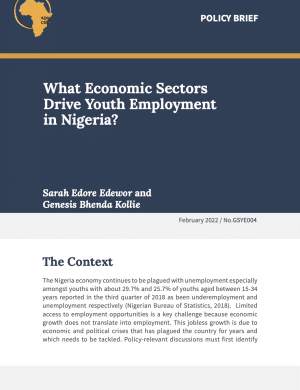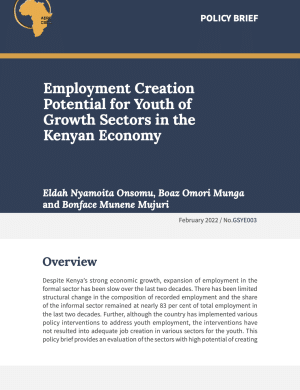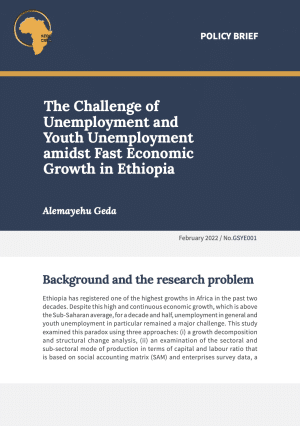
Ethiopia has registered one of the highest growths in Africa in the past two decades. Despite this high and continuous economic growth, which is above the Sub-Saharan average, for a decade and a half, unemployment in general and youth unemployment in particular remained a major challenge. This study examined this paradox using three approaches: (i) a growth decomposition and structural change analysis, (ii) an examination of the sectoral and sub-sectoral mode of production in terms of capital and labour ratio that is based on social accounting matrix (SAM) and enterprises survey data, a SAM based economy-wide model, as well as (iii) by estimating an econometric model that attempts to identify major determinants of unemployment (youth unemployment).
Growth Sectors for Youth Employment (GSYE) is an African Economic Research Consortium (AERC) collaborative research that is seeking to provide research evidence on which economic sectors have the potential to significantly create employment for youth. The project was commissioned by INCLUDE, with support from the Netherlands Ministry of Foreign Affairs. The project is implemented by AERC in conjunction with the Economic Research Forum (ERF) and the Overseas Development Institute (ODI). The project aims to provide research evidence on the economic sectors with the highest multipliers and potential to create employment opportunities for young people in the continent.
This policy brief presents the country case study of Ethiopia, one of the nine countries selected for country-specific research.
You can find more information on this page.
